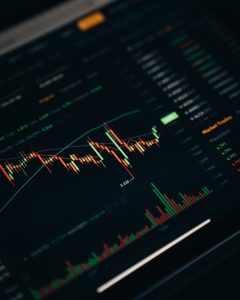The term SMA or Simple Moving Average is one of the most commonly used technical indicators in the forex market. It is a widely used tool that helps traders to identify the trend direction of a currency pair. In this article, we will be discussing what SMA is, how it works, its types, and its practical applications in forex trading.
What is SMA?
SMA is a technical indicator that calculates the average price of an asset over a specified period. It is called a “simple” moving average because it takes the arithmetic mean of the prices for a specified period. As the name suggests, the calculation of SMA is simple and straightforward – it merely adds the prices of the asset over a particular period and divides it by the number of periods.
For example, if we want to calculate the SMA of a currency pair for the last 10 days, we add the closing prices of the pair for the past ten days and divide it by 10. The resulting value is the SMA for that currency pair over the last ten days.
How does SMA work?
The SMA is plotted on a chart as a line that moves along with the price of the asset. It smooths out the price data by filtering out the random noise, and it highlights the trend direction of the asset. Traders use SMA to identify the overall direction of the trend and to determine the support and resistance levels.
Types of SMA
There are three types of SMA that traders commonly use: Simple, Exponential, and Weighted.
Simple Moving Average (SMA)
As discussed earlier, SMA is the basic moving average that calculates the average price of an asset over a specified period. It is simple and easy to understand.
Exponential Moving Average (EMA)
Exponential Moving Average or EMA is a more complex version of the SMA. It gives more weight to the recent price data, and it reflects the current market conditions better. The EMA calculation formula is more complicated than the SMA, and it gives more significance to the current prices.
Weighted Moving Average (WMA)
Weighted Moving Average or WMA is a moving average that assigns more weight to the recent prices. It is similar to EMA, but it places more emphasis on the most recent prices. The WMA is a more responsive indicator than SMA and EMA.
Practical Applications of SMA in Forex Trading
SMA is widely used by forex traders to identify the trend direction of a currency pair. It helps traders to determine the support and resistance levels of the pair, and it gives the traders a clear idea of the market sentiment. Here are some practical applications of SMA in forex trading.
Identifying the trend direction
The SMA is an excellent tool for identifying the trend direction of a currency pair. Traders use the SMA to determine whether the market is in an uptrend, downtrend or sideways trend. If the SMA is moving upwards, it indicates that the market is in an uptrend, and if it is moving downwards, it indicates that the market is in a downtrend.
Determining Support and Resistance Levels
SMA is also used to determine the support and resistance levels of a currency pair. In an uptrend, the SMA acts as a support level, and in a downtrend, it acts as a resistance level. Traders use these levels to enter and exit trades.
Crossover Signals
Another practical application of SMA is the crossover signals. When the shorter-term SMA crosses above the longer-term SMA, it indicates a bullish crossover, and when the shorter-term SMA crosses below the longer-term SMA, it indicates a bearish crossover. Traders use these signals to enter and exit trades.
Conclusion
In conclusion, SMA is a widely used technical indicator that helps traders to identify the trend direction of a currency pair. It is a simple and easy-to-understand tool that helps traders to determine the support and resistance levels of the pair. SMA is an essential tool for any forex trader, and it should be a part of their technical analysis toolkit.






